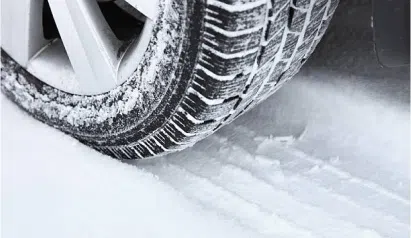Starting October 1, BC drivers are required to use winter tires on most highways — even if there’s no snow on the road.
Fall weather brings cooler temperatures, rain, and early morning frost, all of which can reduce traction. That’s why Road Safety at Work is urging drivers to not only install winter tires early, but also check their condition.
“Worn or damaged winter tires can be just as dangerous as not having them at all,” says Road Safety at Work spokesperson Trace Acres. Drivers should look for signs of damage, such as cracks, bulges, or uneven wear, and ensure tires have at least 3.5 mm of tread depth.
Winter tire regulations remain in effect until March 31, and until April 30 on select high-snowfall routes and mountain passes.
If you’re buying new tires, look for the three-peaked mountain and snowflake symbol, which indicates higher performance in snow and cold conditions than the basic “M+S” rating.
WorkSafeBC reports that work-related crash injuries rise about 20% in winter. Employers are responsible for ensuring worker safety behind the wheel, even in personal vehicles.










Comments